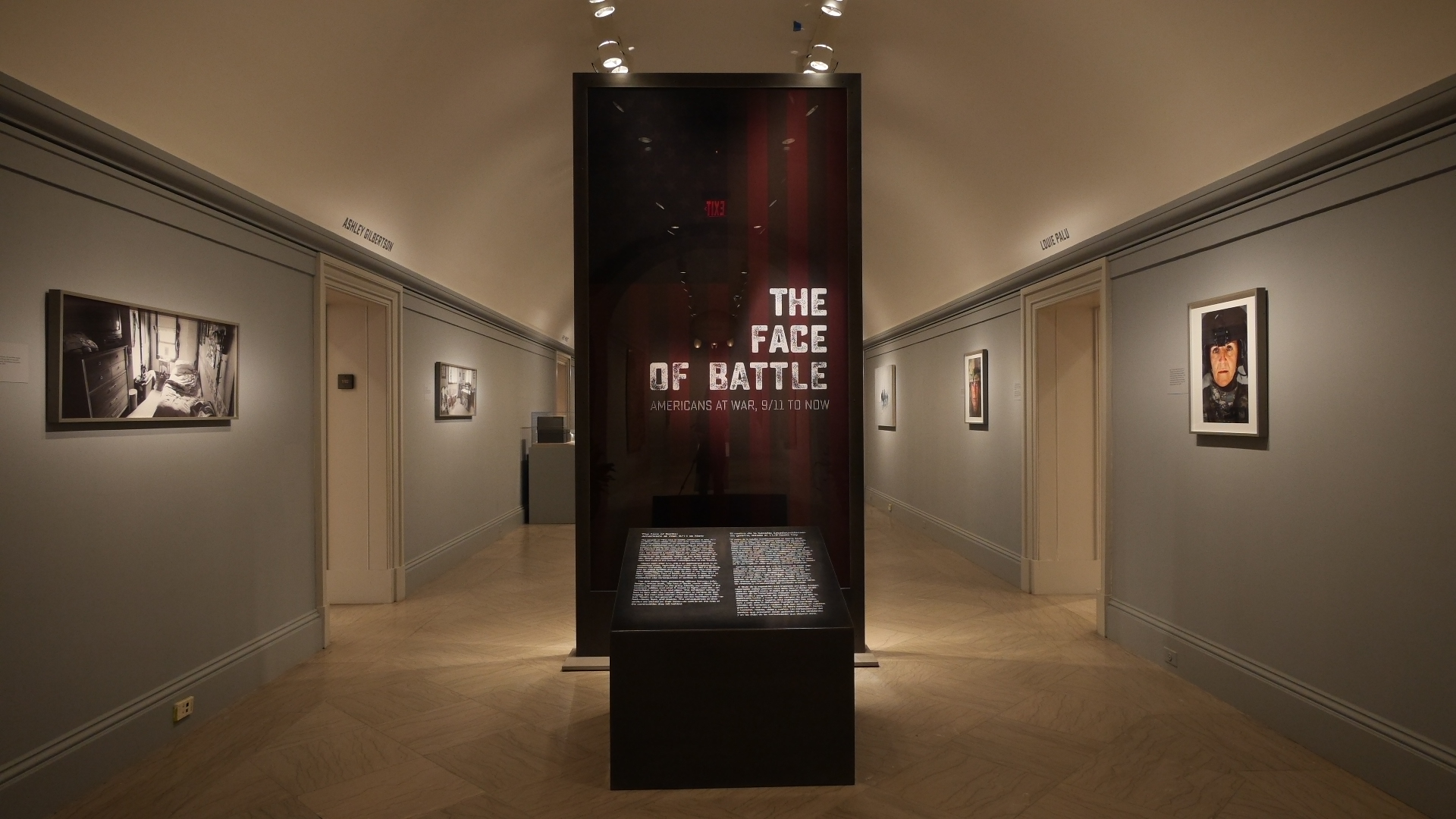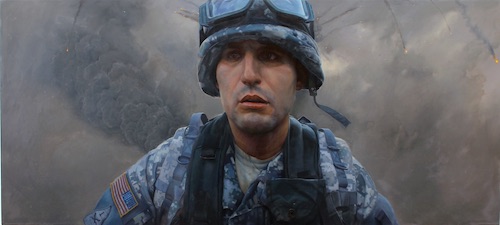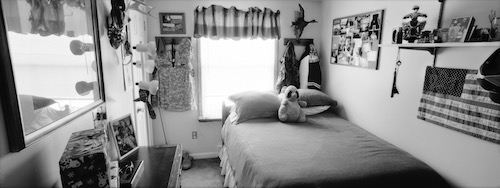The Face of Battle: Americans at War, 9/11 to Now

The National Portrait Gallery, Washington, D.C.
April 7, 2017 – January 28, 2018
In the National Portrait Gallery’s ongoing exhibition, The Face of Battle: Americans at War, 9/11 to Now, the first face that you see is your own. Your likeness, dark and indistinct, is reflected through a red and black American flag, hung vertically. The image is displayed on the glass surface of twin pillars that mark both ends of the exhibition’s hallway (Figure 1). The symmetrical layout of the space echoes this mirroring effect: three doorways parallel one another, each threshold marked with the name of the contributing artist whose work the room contains.
The works illustrate sacrifice in different ways in order to accomplish the dual objectives laid out in the exhibition’s press release: to show the psychological impact of the conflict in the Middle East on servicemen and women and to explore formal developments in the field of portraiture. For example, Emily Prince’s miniature pencil sketches, drawn on skin-toned paper, contrast in scale and media with Vincent Valdez’s massive hyper-realistic oil painting of his childhood friend, John Holt (Figure 2), who committed suicide after his years-long struggle with PTSD. Similarly, Louie Palu’s intensely present photographs featuring soldiers’ direct unwavering gazes seem to form an iconographic counterpoint to Ashley Gilbertson’s hauntingly absent black-and-white images of the empty bedrooms of the deceased (Figure 3).

In themselves, such works, although deeply moving, do not demonstrate the full impact of the exhibition. The format, not discussed in any didactics, adds layers of meaning that help the exhibition surpass its goals and make up for its possible shortcomings. The exhibition’s curators acknowledge that the works do not examine wider geopolitical concerns, such as the impact on foreign allies and civilians of conflict-ridden countries. However, by creating spaces to connect with the experiences of American servicemen and women, which can seem impossibly distant, The Face of Battle can also help bridge these divides.

Copyright Ashley Gilbertson/VII Photo.
Each room provides such a space, allowing visitors to take on the respective artist’s perspective. This becomes most obvious where the line between subject and artist blurs. In Stacy L. Pearsall’s room, for example, roles reverse as the Air Force photographer rests, and a comrade captures her candid pose (Figure 4). Directly across the hallway is Tim Hetherington’s room (Figure 5). The photojournalist’s 2011 death while covering the Libyan Civil War lends a different type of presence. In his absence his sacrifice becomes inscribed upon those of the men in his images, and their sacrifices on his.

On their own, the rooms present powerful experiences, but they are not isolated. You can see into the room directly across the corridor, and unmarked doors link adjacent rooms. I understand the exhibition as a conversation, one directed by the viewer. In each room, we question how the conflict in the Middle East has affected us individually. But when we cross into another room or peek across the corridor, we ask how it has affected us collectively, as humans. The Face of Battle is a success because it is not satisfied with merely showing us how the sacrifices made by so many have become intertwined in the fabric of our everyday lives. Instead, it reenacts the experience.
